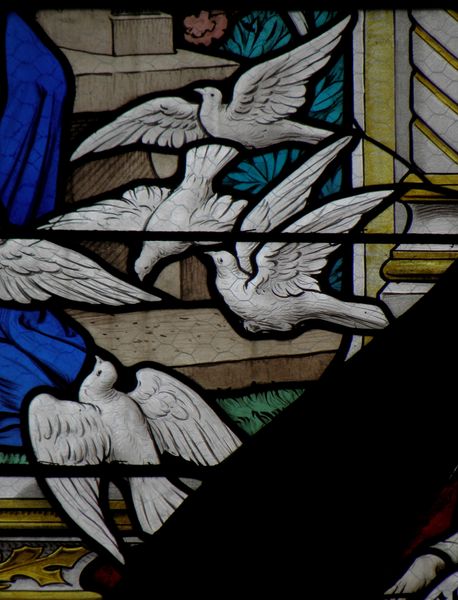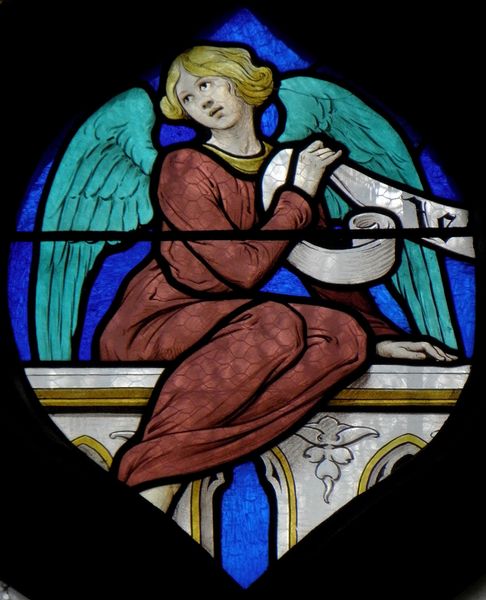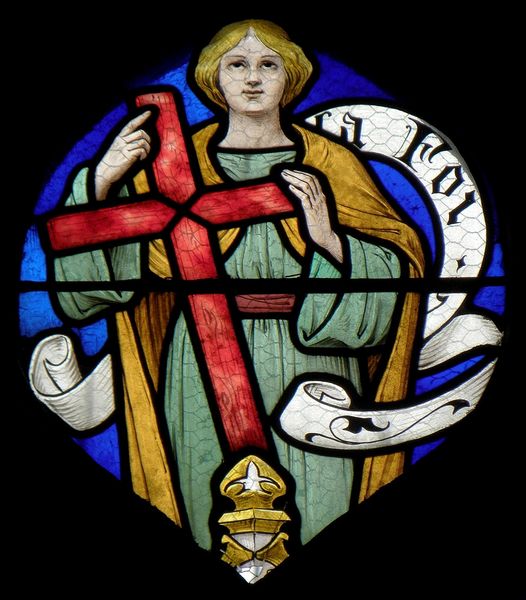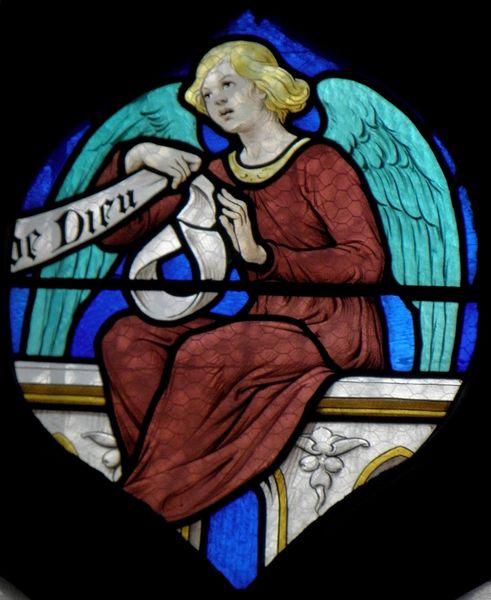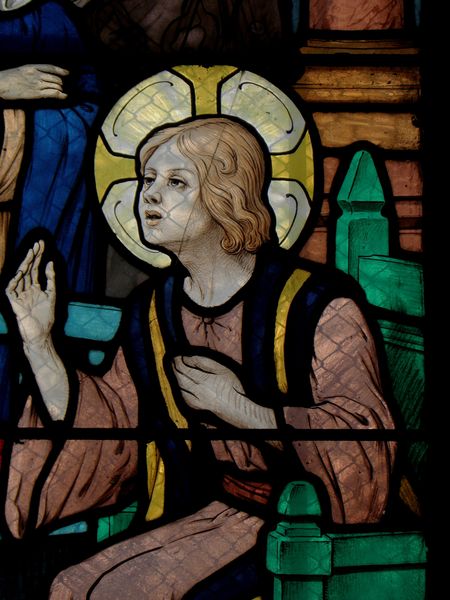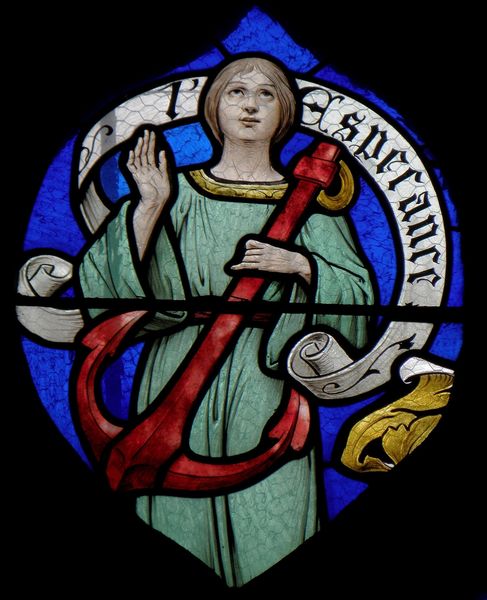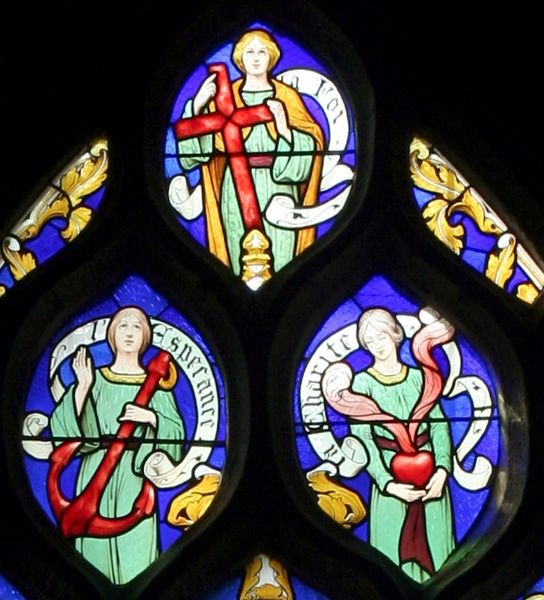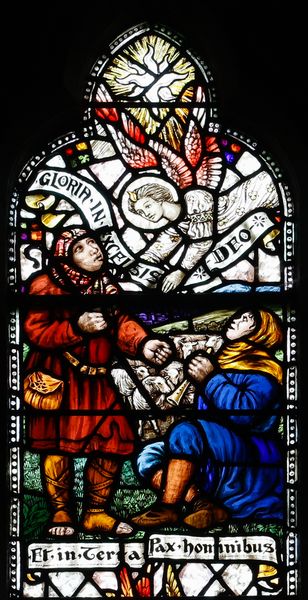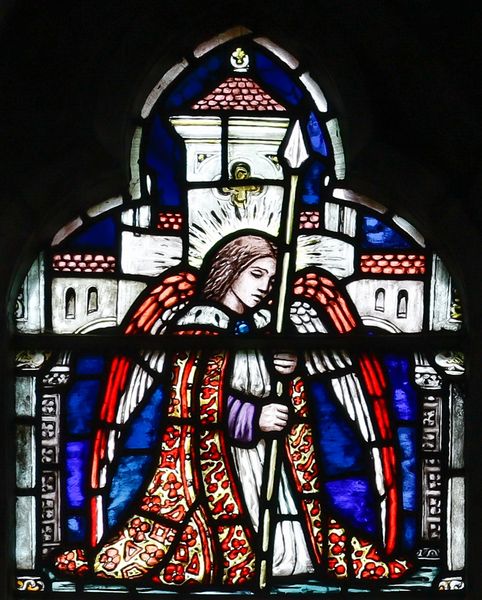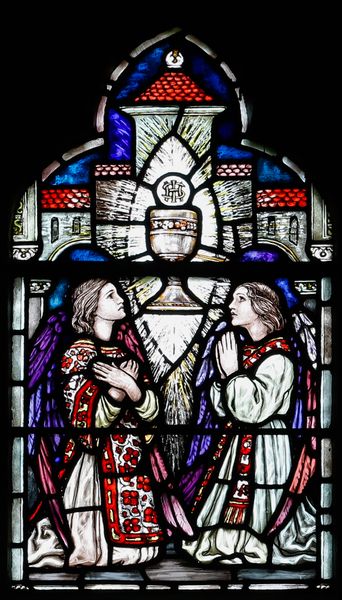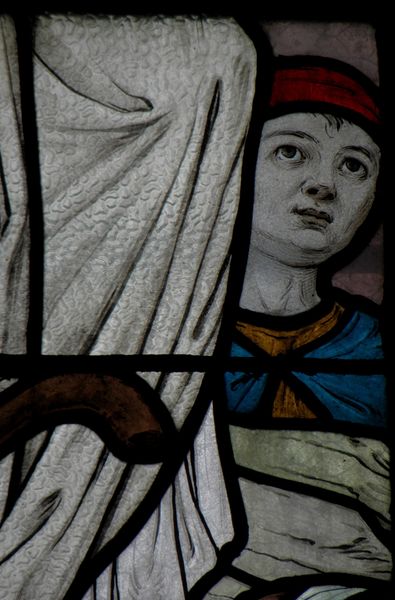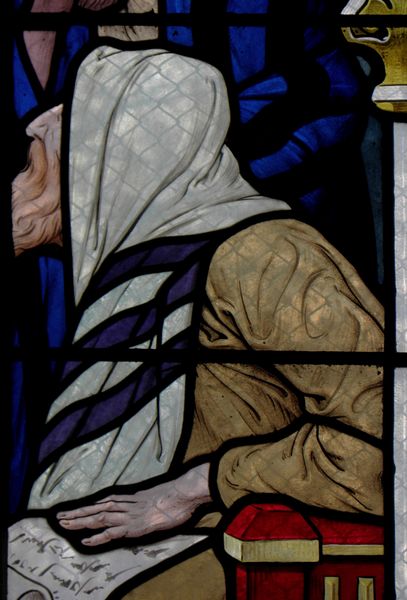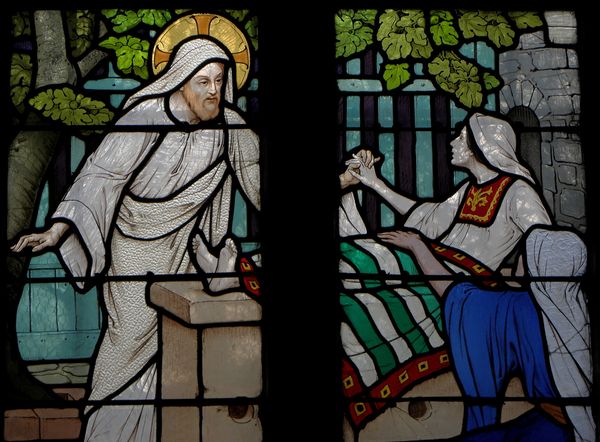
glass
#
medieval
#
narrative-art
#
graffiti art
#
street art
#
graffiti design
#
junji ito style
#
figuration
#
glass
#
abstract pattern
#
comic book style
#
pattern repetition
#
funky pattern
#
doodle art
#
reptilian
Copyright: Public domain
Curator: This is a detail from "Life of Christ," a stained glass work in Église Saint-Sulpice de Fougères, created in 1919 by Ludovic Alleaume. Editor: It’s quite stunning, this pane! The diamond shape and soft color palette create a calming, contemplative mood. There’s a serenity that resonates even through a cropped detail. Curator: The production of stained glass windows involves meticulous labor and craftsmanship. Each piece of glass is carefully selected, cut, and painted before being fired and assembled with lead cames. Consider the socio-economic context of Alleaume’s studio – who were the artisans involved, and how were their skills valued and compensated? Editor: And consider the church as a space--public, yes, but a sacred space defining gender roles and societal norms of the time, no? The choice of stained glass itself, allows the telling of Biblical narrative to a possibly largely illiterate population. How might women within the congregation have felt viewing the scene and participating within it? How does that lens shift with time and viewing it now? Curator: Absolutely. Also, we can look closely at the raw materials of its creation. The glass itself, the metallic oxides used for coloration, the lead that binds it—they each have their own histories and impact. Think about the availability and cost of these materials in post-war France. Did scarcity affect the artistic process? Editor: This reminds me of feminist writings, critiquing dominant historical narratives that historically sidelined contributions by women. While Alleaume's authorship is acknowledged, recognizing and highlighting the skills of anonymous laborers, particularly women who undoubtedly played roles in the glass production, resists art-historical gatekeeping that devalues them or excludes. Curator: I agree. It’s easy to focus on the finished product, but it’s important to remember the layers of labor and materiality that contribute to the overall artwork, expanding it from pure symbol to artifact of industry. Editor: Looking closer, it's impossible not to appreciate this stained glass less as a static devotional image than as a point for discussing shared social experience in community. Curator: Exactly! It highlights the connections between artistic creation and everyday life. Editor: Yes, framing it contextually adds so much to this window’s power.
Comments
No comments
Be the first to comment and join the conversation on the ultimate creative platform.
